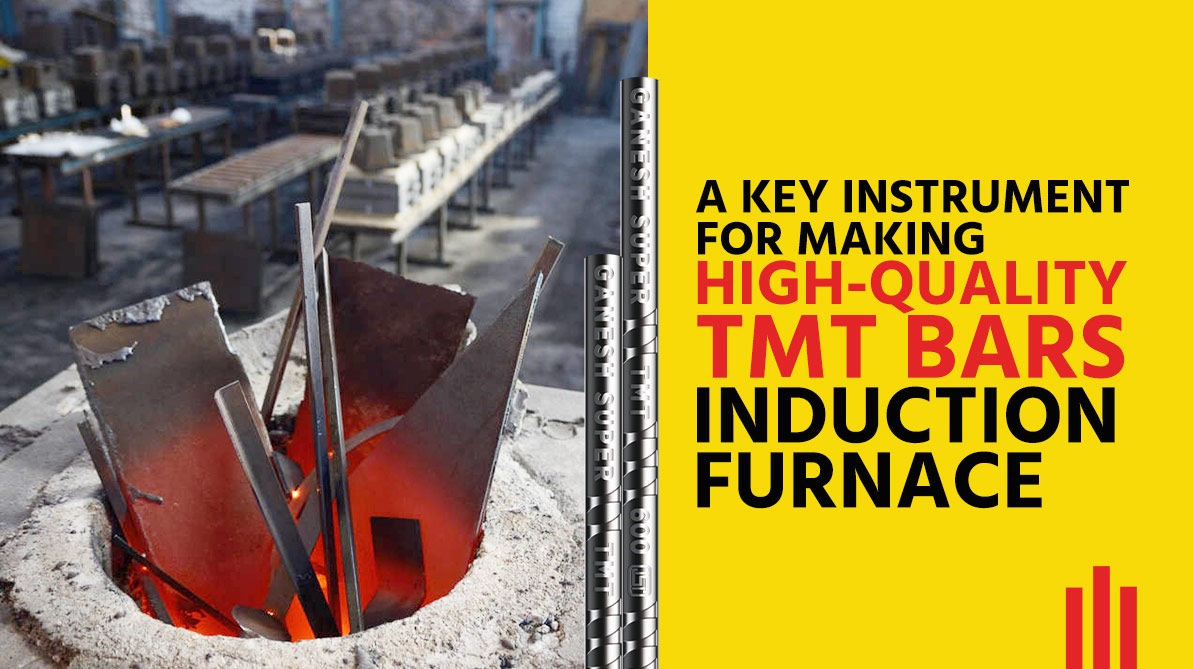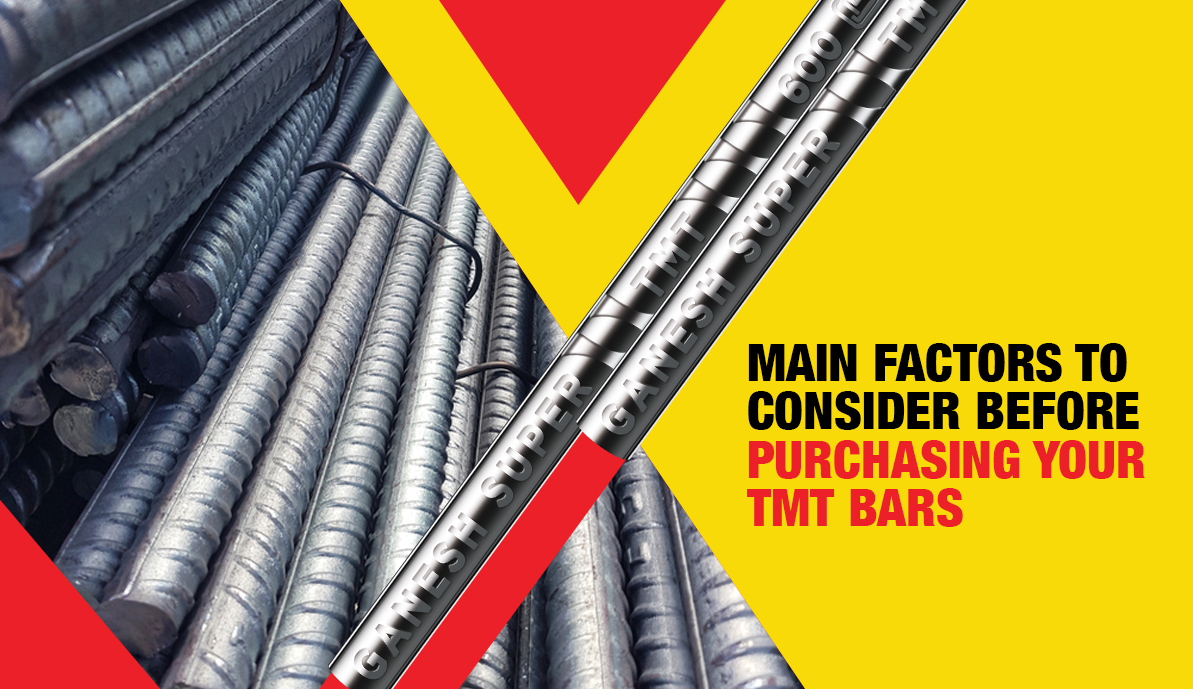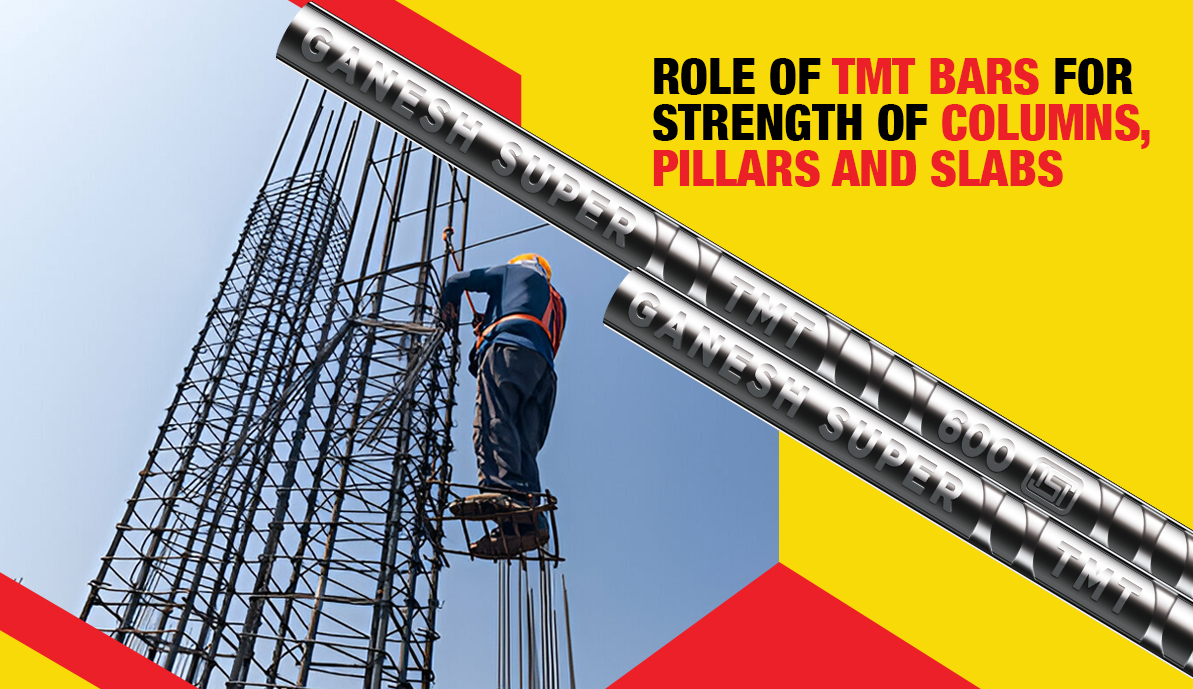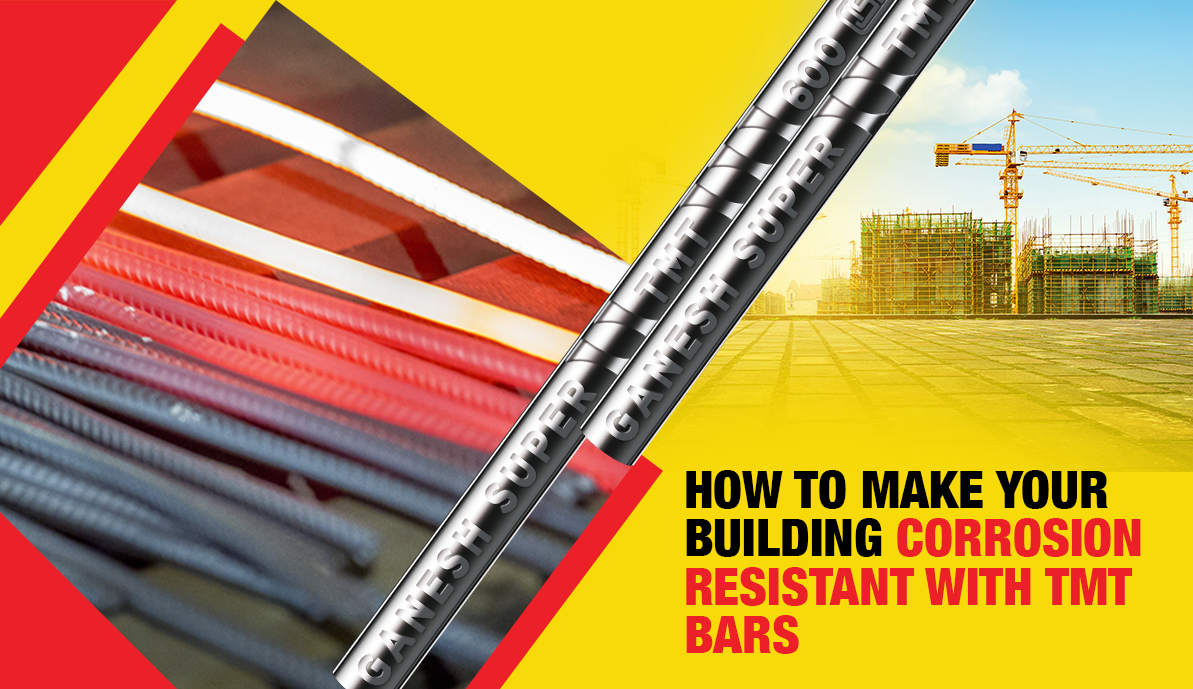At Ganesh Super, we manufacture the best mild steel and TMT bars in various presentations: round, square, and flat bars, all made of mild carbon steel. Our products are of the best quality, the most resistant, and one of the best you can find on the market. How do we do it? By ensuring that they are manufactured with the most refined and optimal processes to ensure the highest quality of our products.
To do this, we use the best manufacturing and metallurgy equipment. One of the most important is the induction furnace, which guarantees the best quality when manufacturing the product. Therefore, in this blog, we want to discuss the types and advantages that this type of instrument offers so that there are no doubts about our very high standards when it comes to the manufacturing process of our TMT bars.
Induction furnaces are an excellent means of melting materials quickly and with quality, making them very useful in multiple industries. Likewise, they are easy to operate and affordable in the market, and their operation is crucial as it allows precise control of temperature and heat.
What is an Induction Furnace?
Induction furnaces are a category of heating and hardening equipment used in a wide variety of industrial environments, including TMT Bars Manufacturers. These heavy-duty furnaces heat and melt many different types of metals through electromagnetic induction rather than traditional melting methods, which guarantees a high-quality product in comparison with traditional propane gas furnaces.
Due to their advantages, several different industries use induction furnaces to melt or heat metal. Metals that can be handled by induction furnaces include iron, steel, zinc, copper, aluminium, bronze, silicon, and precious metals such as gold, silver, and platinum.
Industries that rely on induction heat include:
- Precious metal refineries and recycling units
- Steel plants
- Mining, aerospace, and defense industry
- Silicon fusion plants
- Foundry and blacksmith operations
- Laboratory, University, and R&D sectors
Let’s Know About the Types of Induction Furnaces
Although these induction heating ovens are a great tool for TMT Bars Manufacturers, to achieve optimal results in industrial processes, it is essential to know what their types are, how each one is characterized, and what their advantages are.
Industrial heating equipment is divided into different types of ovens: propane and induction. On this occasion, we are going to share which ones can be differentiated within induction ovens, how they operate, and what they are for.
High-Frequency Coreless Furnace
This type of furnace has a crucible surrounded by a copper coil, which, to operate correctly, must be cooled by water. Through it, a current passes capable of generating a magnetic field that heats the crucible and melts the metal inside.
Core or Channel Furnace
This type of oven features a coil that surrounds a small portion of the unit. This means that the coil generates a closed movement from the molten metal and induces a low-voltage, high-amperage electric current that produces the heat necessary for melting. In other words, for this type of furnace to work, it is necessary to use a little molten metal so that it can melt a secondary piece.
Classes of Induction Furnaces According to their Frequency
In addition to core type, induction metal smelting furnaces can also be classified according to their frequency. In that order of ideas, there are three types:
Low Frequency
Heat is produced by the Joule effect, which refers to the phenomenon in which an electrical conductor is transformed into heat. From this principle, the current must be induced through the metal to be melted.
High Frequency
In this case, heat is produced through eddy currents, which refer to the induction of a conductive medium in the presence of a flow in a magnetic field. In this way, the relative movement generates the circulation of electrons, and heat may be generated.
Electronic Furnaces
Finally, in this type of oven, heat is produced by the molecular vibration caused when a medium is subjected to a strong field of high-frequency electromagnetic radiation.
Functionality of Induction Ovens
Determining the functionality of an induction oven is possible if you take into account the multiple uses it can have when used. For this reason, in addition to knowing the types of ovens that exist and how they operate, it is also crucial to learn to identify their functions. Some of the industries that use induction furnaces are:
- Precious metal refineries and recycling units.
- Steel plants.
- Mining, aerospace, and defense industry.
- Silicon fusion plants.
- Foundry and blacksmith operations.
- Laboratory Sectors.
In each of these cases, the induction furnace can be used to meet the particular demand evident in the solid metals industry and operate according to the specific requirements of the area or sector. On the other hand, in addition to their effectiveness being useful in many scenarios, induction ovens are also often preferred because they have a valuable number of advantages.
Advantages of Induction Furnace to Manufacture TMT Bars
As a TMT Bars Suppliers, Ganesh Super knows that to obtain a better product you need the best tools to manufacture it. In the case of the TMT bar that Ganesh Super produces, it uses induction furnaces due to the advantages it brings to the casting process.
Induction ovens allow us to produce high volumes of TMT bars and, at the same time, reduce risks to the environment and staff health. Unlike conventional gas-fired ovens, induction ovens release fewer gases, and the heating process is very clean, allowing strict environmental protection regulations to be met. There are several advantages they provide.
Low Operating Costs
Today’s manufacturers develop technologies that optimize functional processes. Current furnaces consume little energy, which implies economic savings, and through automation, they can reduce metal loss and waste produced during the process.
High Efficiency
Inductive furnaces have a high-voltage primary coil, which generates frequencies between 50 to 10,000 Hertz per second. In this way, the forge heats up faster, and greater thermal efficiency is obtained, which increases performance and implies fewer losses.
Excellent Metallurgical Function
The principle behind induction heating can be observed in the high-voltage primary coil. This coil generates high electromagnetic currents to heat and melt metals. The molten metal and the inductor repel each other due to the charges that lift the molten metal in the center. This phenomenon is called “electromagnetic stirring,” which provides uniformity in the composition of metals.
Fewer Oxidation Losses
Induction furnaces avoid a problem reported by many metallurgical industries: losses due to burns derived from the oxidation of the elements in the metal. Oxidation in metallic objects, such as molten steel, decreases considerably since the combustion speed of metals is reduced by the low frequencies of the coil. It is worth mentioning that they do not require electrodes for castings, eliminating concerns about the addition of carbon and reducing waste generated by the furnace.
Operational Cleaning
Induction furnaces have a low negative impact compared to gas furnaces because they generate few gases, dust, and fumes related to the smelting processes. They are also very clean, produce little noise during operation, and guarantee optimal emissions controls.
Final words
Induction furnaces offer important advantages, such as clean and energy-efficient melting capabilities, to make first-class TMT steel bars. They use controlled processes to melt metal slowly, without any contact between the metal and the heating element, to reduce product loss. Another benefit of induction furnaces is that they produce significantly less dust and other contaminants than traditional fusion solutions.
At Ganesh Super, we take pride in being the first to use Induction Furance in Bihar and help our clients eliminate quality issues and inconsistencies in their construction works. Our induction furnace system creates TMT bars of superior quality and free of manufacturing defects.
We have proudly spent 30+ years making the best TMT Bars in the market and manufacturer and we are looking forward to many more years of successfully serving our customers. You can contact us so you can tell us more about your needs.





